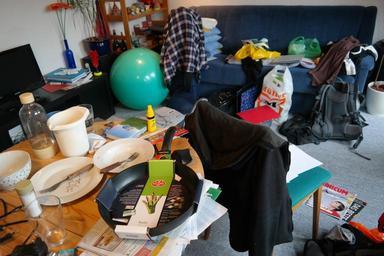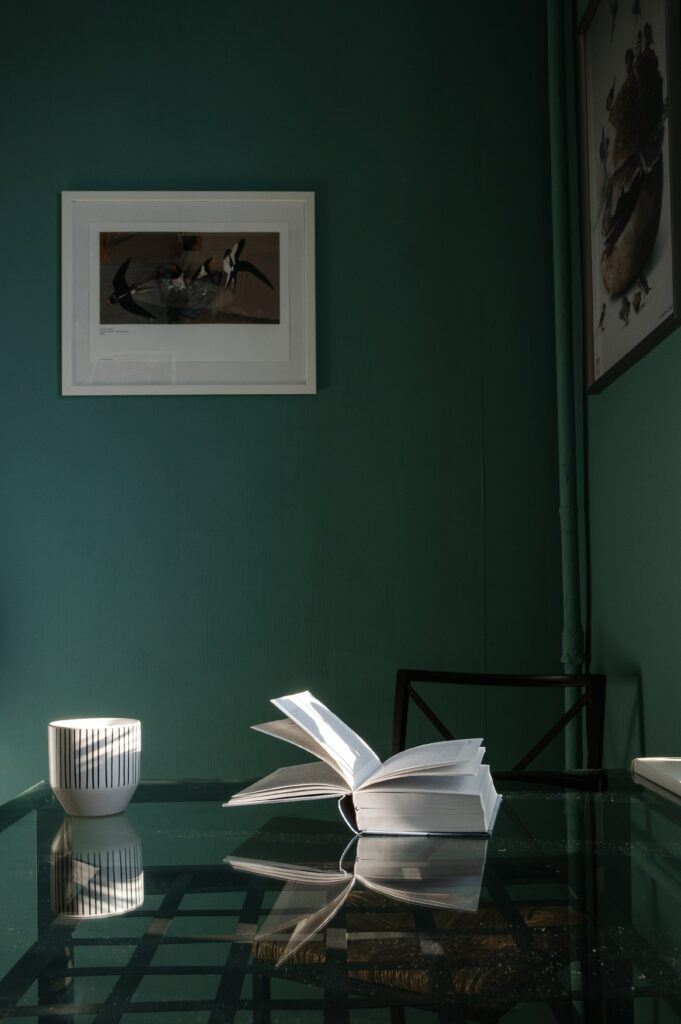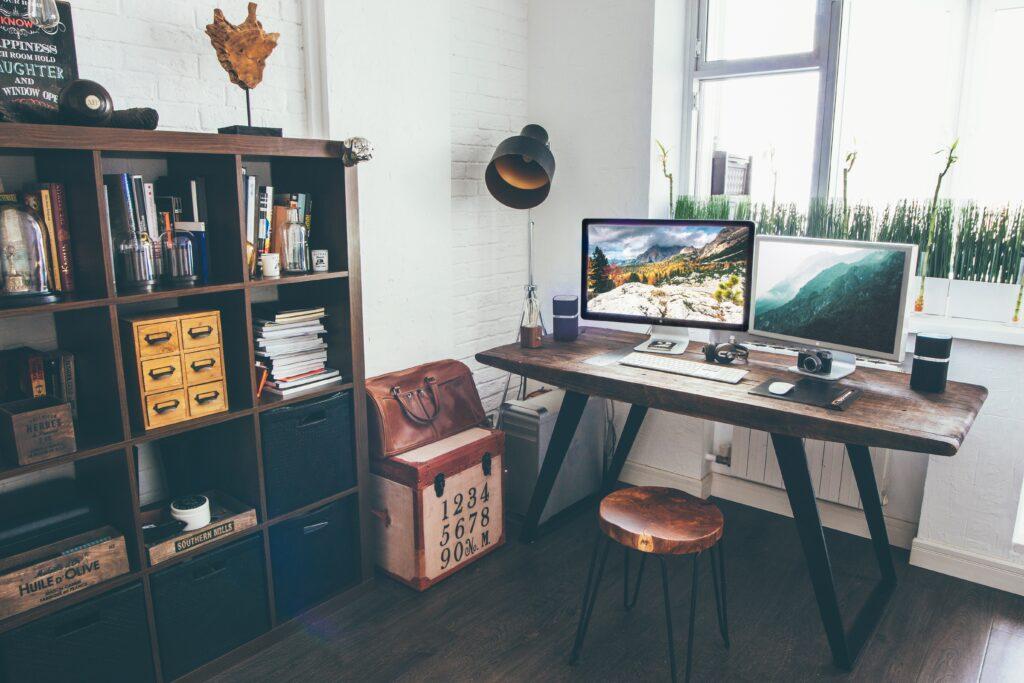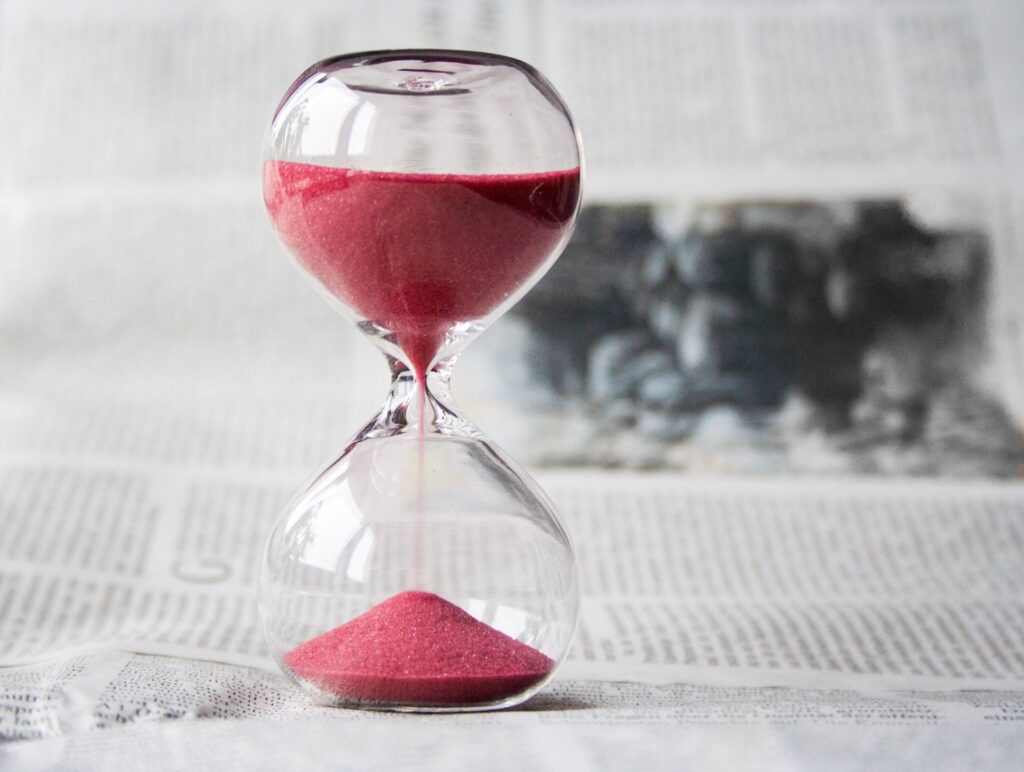I find it that if I am in an unorganized environment, I am not able to concentrate quite as well as when I am in an organized environment. When there are piles of paper in my desk, I simply feel overwhelmed. Chances are you have experienced these same feelings as well. Could you work in a messy desk? Of course. However, it feels so much better to work in an organized office space. You are likely also more productive if you are in an organized office space. Fortunately, your office space is something you can usually control. For this reason learning how to organize an office space is very important.

Why Organization Matters
It makes sense that we would be affected by the state of our surroundings. If your surroundings reflect chaos, your emotional state will also be affected by it. On the other hand, working in an organized office space gives you a sense of control and satisfaction.
An organized office space gives you a good impression about yourself. On the contrary, when your office is messy, it gives you and others a bad impression of you. Whether true or not, you and others may start associating your messiness with how you handle things in general.
Aside from the bad impression it can cause you and others, messiness can lead to serious issues. If you don’t dust or clean regularly, the dirt might attract rodents and insects over time. It might also cause you to develop allergic symptoms. It could even lead you to develop depression or anxiety.
I would also like to bring up the issue of hoarding. Hoarding is a disorder in which the person has an inability to get rid of things. Hoarders might have a strong anxiety of getting rid of random objects. This is true even in situations where it is highly unlikely that they will ever need them again. They will stack their office and/or homes with paper and other objects over the course of years. The amount of accumulated materials eventually makes their environment dangerous.
While tolerance for a small and temporary amount of messiness is normal, it is healthy to strive to keep one’s environment neat and uncluttered. Not caring about your mess can, in fact, be a form of mental illness. If you think you have a problem with hoarding, take steps to get rid of items and become more organized. Of course, seek professional help when needed.

How to Organize an Office Space – Step 1: Identify the Essentials
When organizing your office, jot down the things that are essential to fulfill your job. You’ll need a comfortable chair that will protect your back, so consider getting an ergonomic chair. Also, consider getting an ergonomic mouse and keyboard and a foot stool. You will be in your office a large part of the day. Therefore, you want to make sure that what you are using is comfortable and will prevent injury to your body.
Apart from being able to handle your computer, your desk should be big enough to handle any paperwork you will need during the day. It should also be able to hold other essentials, such as printer, a scanner, telephone, and headset. If you have the opportunity to select you desk, you might be interested in desks that can allow you to work while standing.
You might be interested in: Ways to Relieve Lower Back Pain
You should have good amount of cabinet storage to accommodate items of different sizes. This storage should be used to accommodate things you will need but don’t need to display. Such items could be papers, snacks, your purse, etc. Of course, you should have organizers to organize things within the cabinets (e.g., containers for pens or papers). This will make things easier to find and therefore will help you be more efficient in your work.
Some other useful times you will want to keep in an office space is hand sanitizer, a place to hand your sweater or coat, a shredder, and perhaps a vacuum, dusting cloths, and wet wipes. Of course, you might need a clock, a calendar, music player, and chairs and tables for yourself or visitors. Chances are you will also need some sort of shelves to place decorations, binders, or other things that you use less often and therefore don’t want to crowd your desk with.

How to Organize an Office Space – Step 2: Personalize Your Space
After you have the essentials, think of what you would like to personalize your office. How you decorate your office is really up to you. Each of us has different interests and tastes. I like to decorate my office with pictures of nice scenery and small objects that bring me nice thoughts.
You might be interested in: Define Yourself as a Person
In general, I recommend a minimalist approach when organizing your office. This should decrease distractions and help you maintain an organized environment. Everything should have a purpose – either because you need it to fulfill your job, or because it provides you some positive energy during your workday. I would not recommend having a lot of items beside the essentials described above.
If you have a home office, for example, you might want to put in some weights, yoga mat, or other exercise equipment that you will use during breaks. While I love browsing family pictures and am proud of my academic and professional accomplishments, I prefer not to display these things displayed in my own office space. This is so I can focus on what I want to create rather than what I have already created.
While it is good to go on a walk to grab a coffee or get something to eat, you might want to consider a small fridge, food warmer, and coffee maker in your office. Be aware, though, that, unless you have a home office, you run the risk that others in your office might end up using it more than you. Even in a home office, however, I would prefer not to have these things in my office as I would prefer to step away from my desk for a moment or two.

How to Organize an Office Space – Step 3: Place Items Strategically
Apart from making sure what you should have in your office, you should also decide where to put it.
Here are some tips on how to place items in an office space:
Place things that you use frequently close to you, and those that use less often further away. For example, if you use your printer or hand sanitizer often, these items should be within reach.
Use you desk drawers to store most of what you periodically need. For example, use a drawer to keep snacks. Use another draw to keep items, such as a spare keyboard or mouse, batteries, and new supplies. Keep another drawer for paperwork. And use another drawer to keep pens, markers, paperclips, etc.
Use dividers and organizers when organizing things in drawers to separate small items or to sort papers.
Keep cords tidy. Wrap them up as necessary with electrical cord ties. Make sure that the plug the cords to the nearest outlet, or use extension cords if you need to plug them in a more distant outlet.
Be practical when arranging your furniture. If you have seats for visitors, try to arrange your furniture so there is nothing (e.g., a computer monitor) blocking the view between your visitor and you. Angle your computer so that it will not be subject to sun glare, nor visible to anyone walking into your office space. Also, make sure that they have a place to set papers. Otherwise, a visit to your office might not be very welcoming.

How to Organize an Office Space – Step 4: Adopt Habits That Promote Order
After doing all the work of organizing your office space, you want to keep it that way! Unless you make mindful effort to maintain your office space in order, it can easily and quickly return to state of chaos. For this reason, you should establish a deliberate routine that will help ensure that it is kept tidy:
Return everything to its place as you are done using them, and at least at the end of each day. Also, get rid of papers you no longer need at the end of each day.
Clean your environment every once in a while. After all, it is not nice when you start seeing dust and stains on your desk and computers. And you could easily prevent this by simply wiping these down with a paper towel, tissue, or dusting cloth. If your workplace has maintenance workers who do this, great! If not, it is something you should periodically for your own benefit.
Feel free to move things around and experiment with different arrangements to see what best works for you.
A small but consistent effort invested into keeping your work space tidy will go a long way in preserving your office as a environment conducive for work.

How to organize an office space – Step 5: Go Paperless
Most clutter in the office is due to the accumulation of paper. Fortunately, there is a wealth of technology nowadays that can be used to convert your files to an electronic format.
There are many benefits to keeping your documents electronically. For instance, you can password protect your documents so no one can read them except you. You can also store them in a cloud to be able to access them anywhere. Alternately, you can keep electronic files in external storage devices that are kept disconnected from the computer and are therefore less vulnerable to network hacking. In case of an emergency, you can even keep your external storage device backup in a fire resistant safe.
If that has not convinced you of the benefits of electronic records, consider the fact that paper documents deteriorate over time. You might recall a time when you found a document that was so old that it had changed colors, began to disintegrate, and perhaps lost its legibility. If you scan the document, you would not have to worry about these things happening. An electronic version of your document will most likely preserve the content for a longer period of time.
You might be interested in: Steps to a Paperless Office
Conclusion
Learning how to organize an office space is important to creating a positive emotional state for yourself while you work. It also subconsciously creates a positive impression to yourself and others. It saves you time and energy of looking for things and therefore allows you to work more effectively and efficiently. Additionally, keeping an organized office space helps prevent a number of problems that come along with un-curbed messiness. These include the potential for infestations, allergies, safety hazards, and mental problems.
Some of steps you can take in organizing include sticking to the essential, adding some personal touches without going crazy, and focusing on the ideal placement of items. Of course, you should also do everything possible to go paperless and to cultivate habits that will make maintaining an organized office a breeze. This is especially the case if you are organized not just in the way you organize your physical office space, but also your virtual office space (e.g., your computer files).
Of course, there might be limitations in terms of how you might be able to configure your office space. For instance, you might not be able to choose your furniture or change the entirely change the configuration of your equipment. In these cases, just focus on organizing your office space to the degree that you are able to.
At first, the process of organizing an office space might at first seem daunting and will require a lot of time and effort. It will likely also take a lot of trial and error to get used to organization system that works for you. The time investment in learning how to organize an office space will likely increase your productivity and space in the long run.

